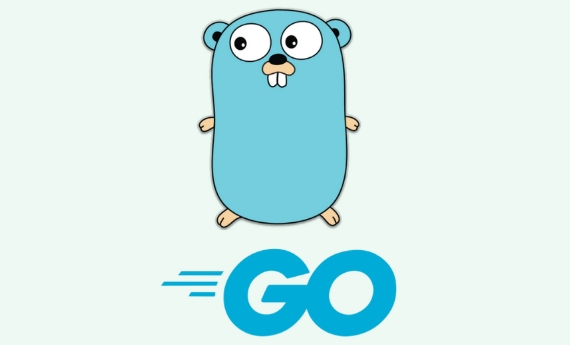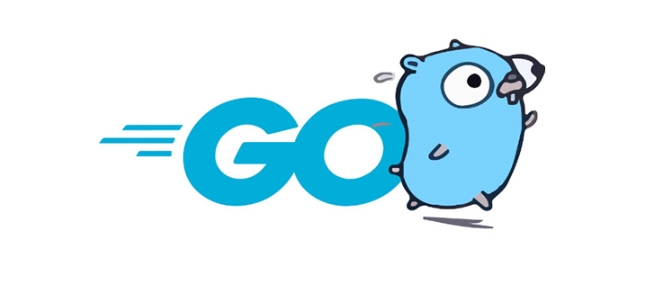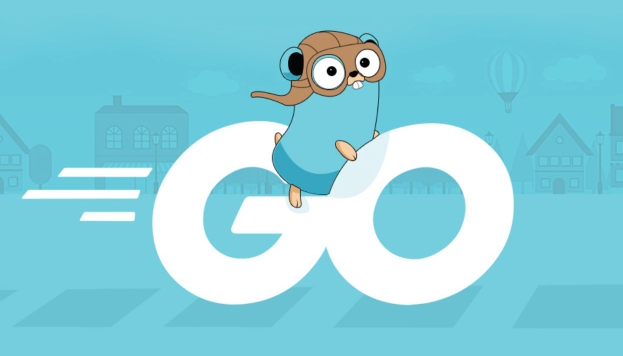Clean Architecture in Go should be implemented by organizing code around features, not layers, with domain logic protected and external concerns isolated; 1. Structure the project by feature-based packages like /internal/user/ containing entity, usecase, delivery, and repository sub-packages; 2. Define core entities and interfaces in inner layers, such as UserRepository interface depending on User entity; 3. Implement use cases that orchestrate business logic using interfaces without knowing concrete implementations; 4. Implement infrastructure components like PostgresUserRepository in /pkg/database/ that satisfy the interfaces; 5. Keep delivery mechanisms like HTTP handlers thin by only parsing input, calling use cases, and formatting output; 6. Perform manual dependency injection in main.go to wire dependencies explicitly without frameworks; avoid common pitfalls like over-naming layers globally, leaking database models into entities, or forcing unnecessary layers, ensuring code remains maintainable, testable, and independent of external concerns.

Implementing Clean Architecture in Go isn't about slapping on layers or creating folders just for the sake of structure — it's about writing code that's maintainable, testable, and independent of frameworks, databases, or external concerns. Go, with its simplicity and strong support for interfaces, is actually a great fit for Clean Architecture.

Here’s how to do it right, without over-engineering.
What Is Clean Architecture (in Practice)?
At its core, Clean Architecture separates your code into layers based on abstractions, not frameworks. The main idea is the Dependency Rule: inner layers should not know about outer layers.

A typical structure looks like this:
- Domain (Entities) – your business logic and core models
- Use Cases (Application Business Rules) – orchestrate data flow, implement app-specific rules
- Interfaces (Delivery) – HTTP handlers, CLI, gRPC, etc.
- Infrastructure (External) – databases, external APIs, config, logging
The flow of control and data goes inward — from the outside in — but dependencies point inward.

1. Structure Your Project by Package (Not Layer)
Avoid domain/, usecase/, infrastructure/ as top-level folders. Instead, organize by feature or context, and keep architectural layers within each.
Example:
/cmd/
api/
main.go
/internal/
user/
delivery/
http.go
usecase/
user_usecase.go
entity/
user.go
repository/
user_repository.go
order/
...
/pkg/
database/
middleware/This way, each feature (user, order) is self-contained, and you can grow without a giant monolithic layer.
2. Define Entities and Interfaces in the Inner Layers
Your entities and interfaces should live in the inner layers. Infrastructure (like PostgreSQL) implements those interfaces.
// /internal/user/entity/user.go
type User struct {
ID int
Name string
Email string
}
// /internal/user/repository/user_repository.go
type UserRepository interface {
GetByID(id int) (*User, error)
Create(user *User) error
}Now, the use case depends on the interface — not the database.
3. Write Use Cases That Orchestrate Logic
Use cases are where your application-specific logic lives. They depend on entities and interfaces.
// /internal/user/usecase/user_usecase.go
type UserUsecase struct {
repo user.UserRepository
}
func (u *UserUsecase) GetUser(id int) (*user.User, error) {
return u.repo.GetByID(id)
}This keeps business rules separate from delivery mechanisms.
4. Implement Interfaces in Infrastructure
Now, implement the UserRepository in the PostgreSQL package.
// /pkg/database/postgres/user_repo.go
type PostgresUserRepository struct {
db *sql.DB
}
func (r *PostgresUserRepository) GetByID(id int) (*User, error) {
// actual DB call
}Then inject it into the use case at startup (in main.go):
// cmd/api/main.go
db := connectDB()
repo := &postgres.PostgresUserRepository{db}
usecase := &user.UserUsecase{repo}
httpHandler := &user.HTTPHandler{Usecase: usecase}5. Keep Delivery Thin
HTTP handlers should only:
- Parse input
- Call use case
- Format output
// /internal/user/delivery/http.go
func (h *HTTPHandler) GetUser(w http.ResponseWriter, r *http.Request) {
id, _ := strconv.Atoi(r.URL.Query().Get("id"))
user, err := h.Usecase.GetUser(id)
// handle err, encode JSON
}No business logic here. Just glue.
6. Dependency Injection Is Manual (and That’s OK)
Go doesn’t need a DI framework. Wire things up in main.go. It’s explicit and clear.
// cmd/api/main.go
func main() {
db, _ := sql.Open("postgres", dsn)
repo := &postgres.UserRepo{db}
usecase := &user.UserUsecase{repo}
handler := &user.HTTPHandler{usecase}
http.HandleFunc("/user", handler.GetUser)
http.ListenAndServe(":8080", nil)
}You control the graph. No magic.
Common Pitfalls to Avoid
- Forcing every layer everywhere: Not every feature needs all layers. Keep it pragmatic.
-
Leaking database models into entities: Don’t expose
gorm.Modelor SQL tags in your core. - Naming packages after layers globally: It leads to “anemic” services and scattered logic.
- Using generics or complex patterns prematurely: Clean Architecture is about separation, not complexity.
Final Thoughts
Clean Architecture in Go works best when it’s simple and practical. Focus on:
- Protecting your business logic
- Depending on abstractions
- Keeping external concerns (DB, HTTP) at the edges
- Organizing by feature, not just layer
It’s not about rigid rules — it’s about making your code easier to change, test, and understand.
Basically: write small packages, use interfaces, and wire things cleanly in main. That’s 90% of it.
The above is the detailed content of Implementing Clean Architecture in Go. For more information, please follow other related articles on the PHP Chinese website!

Hot AI Tools

Undress AI Tool
Undress images for free

Undresser.AI Undress
AI-powered app for creating realistic nude photos

AI Clothes Remover
Online AI tool for removing clothes from photos.

Clothoff.io
AI clothes remover

Video Face Swap
Swap faces in any video effortlessly with our completely free AI face swap tool!

Hot Article

Hot Tools

Notepad++7.3.1
Easy-to-use and free code editor

SublimeText3 Chinese version
Chinese version, very easy to use

Zend Studio 13.0.1
Powerful PHP integrated development environment

Dreamweaver CS6
Visual web development tools

SublimeText3 Mac version
God-level code editing software (SublimeText3)

Hot Topics
 Strategies for Integrating Golang Services with Existing Python Infrastructure
Jul 02, 2025 pm 04:39 PM
Strategies for Integrating Golang Services with Existing Python Infrastructure
Jul 02, 2025 pm 04:39 PM
TointegrateGolangserviceswithexistingPythoninfrastructure,useRESTAPIsorgRPCforinter-servicecommunication,allowingGoandPythonappstointeractseamlesslythroughstandardizedprotocols.1.UseRESTAPIs(viaframeworkslikeGininGoandFlaskinPython)orgRPC(withProtoco
 Understanding the Performance Differences Between Golang and Python for Web APIs
Jul 03, 2025 am 02:40 AM
Understanding the Performance Differences Between Golang and Python for Web APIs
Jul 03, 2025 am 02:40 AM
Golangofferssuperiorperformance,nativeconcurrencyviagoroutines,andefficientresourceusage,makingitidealforhigh-traffic,low-latencyAPIs;2.Python,whileslowerduetointerpretationandtheGIL,provideseasierdevelopment,arichecosystem,andisbettersuitedforI/O-bo
 Is golang frontend or backend
Jul 08, 2025 am 01:44 AM
Is golang frontend or backend
Jul 08, 2025 am 01:44 AM
Golang is mainly used for back-end development, but it can also play an indirect role in the front-end field. Its design goals focus on high-performance, concurrent processing and system-level programming, and are suitable for building back-end applications such as API servers, microservices, distributed systems, database operations and CLI tools. Although Golang is not the mainstream language for web front-end, it can be compiled into JavaScript through GopherJS, run on WebAssembly through TinyGo, or generate HTML pages with a template engine to participate in front-end development. However, modern front-end development still needs to rely on JavaScript/TypeScript and its ecosystem. Therefore, Golang is more suitable for the technology stack selection with high-performance backend as the core.
 How to install Go
Jul 09, 2025 am 02:37 AM
How to install Go
Jul 09, 2025 am 02:37 AM
The key to installing Go is to select the correct version, configure environment variables, and verify the installation. 1. Go to the official website to download the installation package of the corresponding system. Windows uses .msi files, macOS uses .pkg files, Linux uses .tar.gz files and unzip them to /usr/local directory; 2. Configure environment variables, edit ~/.bashrc or ~/.zshrc in Linux/macOS to add PATH and GOPATH, and Windows set PATH to Go in the system properties; 3. Use the government command to verify the installation, and run the test program hello.go to confirm that the compilation and execution are normal. PATH settings and loops throughout the process
 Resource Consumption (CPU/Memory) Benchmarks for Typical Golang vs Python Web Services
Jul 03, 2025 am 02:38 AM
Resource Consumption (CPU/Memory) Benchmarks for Typical Golang vs Python Web Services
Jul 03, 2025 am 02:38 AM
Golang usually consumes less CPU and memory than Python when building web services. 1. Golang's goroutine model is efficient in scheduling, has strong concurrent request processing capabilities, and has lower CPU usage; 2. Go is compiled into native code, does not rely on virtual machines during runtime, and has smaller memory usage; 3. Python has greater CPU and memory overhead in concurrent scenarios due to GIL and interpretation execution mechanism; 4. Although Python has high development efficiency and rich ecosystem, it consumes a high resource, which is suitable for scenarios with low concurrency requirements.
 How to build a GraphQL API in golang
Jul 08, 2025 am 01:03 AM
How to build a GraphQL API in golang
Jul 08, 2025 am 01:03 AM
To build a GraphQLAPI in Go, it is recommended to use the gqlgen library to improve development efficiency. 1. First select the appropriate library, such as gqlgen, which supports automatic code generation based on schema; 2. Then define GraphQLschema, describe the API structure and query portal, such as defining Post types and query methods; 3. Then initialize the project and generate basic code to implement business logic in resolver; 4. Finally, connect GraphQLhandler to HTTPserver and test the API through the built-in Playground. Notes include field naming specifications, error handling, performance optimization and security settings to ensure project maintenance
 Choosing a Microservice Framework: KitEx/GoMicro vs Python Flask/FastAPI Approaches
Jul 02, 2025 pm 03:33 PM
Choosing a Microservice Framework: KitEx/GoMicro vs Python Flask/FastAPI Approaches
Jul 02, 2025 pm 03:33 PM
The choice of microservice framework should be determined based on project requirements, team technology stack and performance expectations. 1. Given the high performance requirements, KitEx or GoMicro of Go is given priority, especially KitEx is suitable for complex service governance and large-scale systems; 2. FastAPI or Flask of Python is more flexible in rapid development and iteration scenarios, suitable for small teams and MVP projects; 3. The team's skill stack directly affects the selection cost, and if there is already Go accumulation, it will continue to be more efficient. The Python team's rash conversion to Go may affect efficiency; 4. The Go framework is more mature in the service governance ecosystem, suitable for medium and large systems that need to connect with advanced functions in the future; 5. A hybrid architecture can be adopted according to the module, without having to stick to a single language or framework.
 Go sync.WaitGroup example
Jul 09, 2025 am 01:48 AM
Go sync.WaitGroup example
Jul 09, 2025 am 01:48 AM
sync.WaitGroup is used to wait for a group of goroutines to complete the task. Its core is to work together through three methods: Add, Done, and Wait. 1.Add(n) Set the number of goroutines to wait; 2.Done() is called at the end of each goroutine, and the count is reduced by one; 3.Wait() blocks the main coroutine until all tasks are completed. When using it, please note: Add should be called outside the goroutine, avoid duplicate Wait, and be sure to ensure that Don is called. It is recommended to use it with defer. It is common in concurrent crawling of web pages, batch data processing and other scenarios, and can effectively control the concurrency process.






